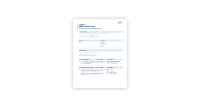Running for different distances - Lesson Plan

Physical Education Resource Description
In the second lesson of the Athletics unit for Year 3, students are introduced to running for different distances with the aim of mastering the basic techniques for both sprinting and distance running. The objectives are clear: students should replicate fundamental running techniques, understand the importance of pacing for strategic racing, and be able to recognise and appreciate good running performances. The lesson utilises cones as a resource and incorporates literacy by teaching terms such as 'sprinting', 'distance running', 'pace', and 'tactics'. Success in this lesson is measured by the students' ability to run for varying distances, conserve energy for a final sprint, and acknowledge each other's achievements in running.
The lesson begins with a warm-up activity called Speed Bounce, where students jump side to side over an obstacle, counting their completions. This exercise is designed to last for five minutes and serves to prepare the students for the main activities ahead. The first main activity focuses on running at a set intensity. Students are asked to discuss their understanding of sprinting versus long-distance running and the need for pacing. They then pair up to run a lap at 50% of their maximum speed, which helps them develop a sense of pacing. The next activity, a 30m paired run, challenges students to run side by side, matching their partner's speed, and culminates in a 30m sprint race. Students are encouraged to vote for the best paired performance, focusing on steady-state running. The lesson concludes with a cool-down involving strength games, where students walk, side step, and perform various static exercises to promote full-body strength and flexibility. Each position is held for 10 seconds to ensure a controlled and beneficial cool-down session.

